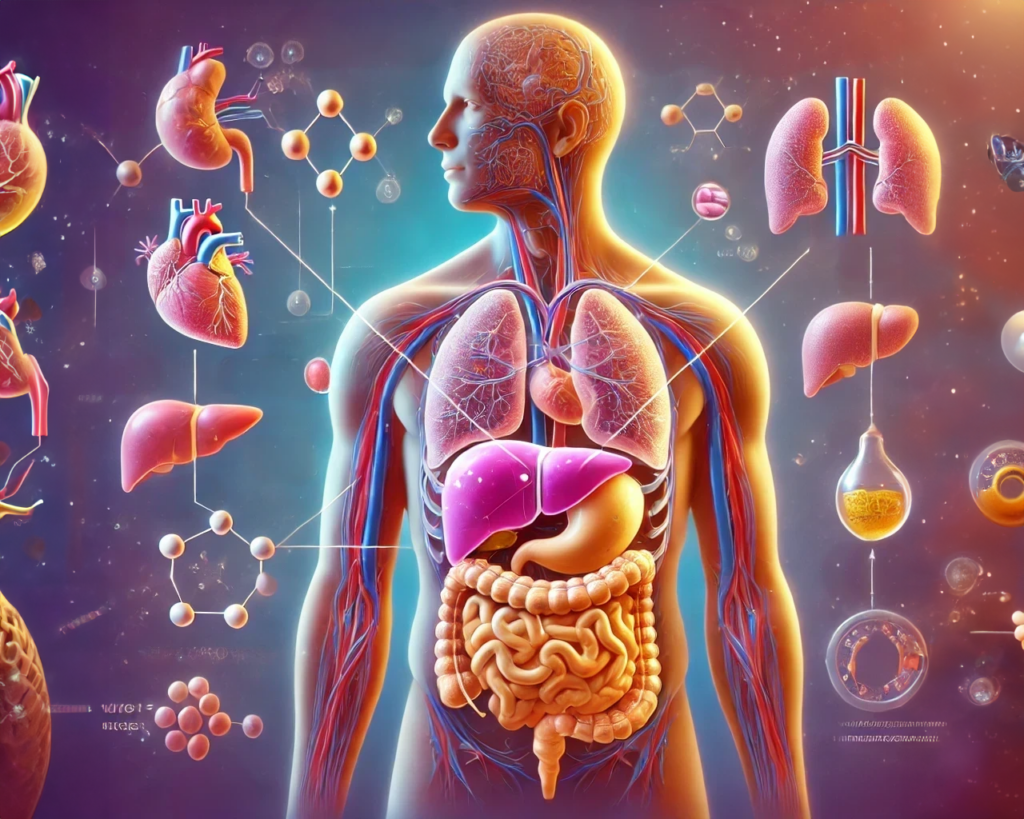💊 What is Gluconeogenesis?
What is gluconeogenesis? As you may already know, energy in the form of ATP is generated from carbs during cellular respiration. But what happens during fasting? low carb diets? or during long periods of exercise when glucose is not available? Great question for a Monday, I came up with it myself – it turns out our bodies can make glucose from scratch, from non-carbohydrate molecules. This process is called gluconeogenesis and it primarily occurs in the liver and to a lesser extent in the renal cortex.
Gluconeogenesis – Gluco-: Glucose, derived from “glukus,” meaning “sweet,”. Neo-: Basically, Neo from the matrix, and. “Genesis: meaning “origin” or “creation.” So: the creation of new glucose.
The primary starting materials for gluconeogenesis include lactate (produced by anaerobic glycolysis in muscles and red blood cells), glycerol (released from adipose tissue during lipolysis), and glucogenic amino acids (derived from muscle protein catabolism).
How does Gluconeogenesis Happen?
Gluconeogenesis is a key component of maintaining normal glucose level – particularly during extended fasting or metabolic stress. But it is very from glycogenolysis – which involves the breakdown of glycogen stores, as gluconeogenesis generates brand new glucose, essentially circumventing glycolysis by reversing several of its steps.
The process of gluconeogenesis involves a series of enzymatic reactions that bypass the irreversible steps of glycolysis, making gluconeogenesis energetically demanding; for example, it requires ATP and GTP to drive these reactions forward.
Regulation of gluconeogenesis is tightly controlled by hormonal signals, primarily glucagon and cortisol, which upregulate the process in response to hypoglycemia and stress, respectively. As you can expect, insulin, on the other hand, inhibits gluconeogenesis, reflecting its role in reducing blood glucose levels after a meal.
🤔 Why you need to know:
Understanding gluconeogenesis is important because it directly impacts energy availability, especially during fasting or low-carb states. Here are key points and actionable tips to consider:
- Role in Fasting and Low-Carb Diets: During fasting or low-carb intake, gluconeogenesis prevents hypoglycemia by providing a steady supply of glucose. This process is essential for the brain, red blood cells, and other glucose-dependent tissues.
- Exercise Performance: In endurance activities, gluconeogenesis helps maintain blood sugar levels, supporting prolonged physical performance when glycogen stores are depleted.
- Impact on Weight Management: By understanding how the body generates glucose during fasting or low-carb states, you can better manage your diet and exercise routines to optimize fat loss and energy balance.
On top of that, dysregulation of gluconeogenesis is implicated in metabolic conditions such as type 2 diabetes, where excessive hepatic glucose production contributes to hyperglycemia.
Understanding the biochemical intricacies of gluconeogenesis provides insight into the body’s adaptive mechanisms for energy balance and highlights its importance not only in fasting states but also in clinical conditions where glucose homeostasis is disrupted.
Actionable Items:
- Support through Balanced Protein Intake: Ensure adequate protein consumption to provide amino acids necessary for gluconeogenesis, especially if you’re fasting or on a low-carb diet.
- Incorporate Intermittent Fasting: Short fasting periods can stimulate gluconeogenesis, helping improve metabolic flexibility and potentially enhancing fat loss.
- Stay Hydrated: Proper hydration supports metabolic processes, including gluconeogenesis. Drink water regularly, especially during fasting or after exercise.
🧠 Trivia:
Gluconeogenesis is an ancient metabolic pathway shared across many species. It’s a critical survival mechanism that has evolved to ensure that organisms can maintain energy levels even in times of food scarcity, highlighting its fundamental role in human metabolism.

Sign up to the Level Up Newsletter here



